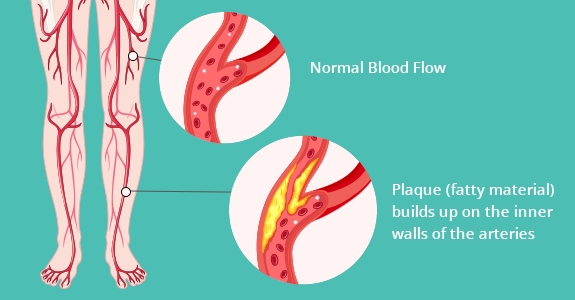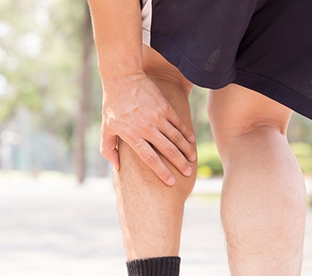Peripheral arterial disease (PAD) refers to blockage or narrowing of the arteries in the legs. Over time, arteries may harden and narrow due to the effects of smoking, high blood pressure, accumulation of cholesterol, long-standing diabetes, or chronic kidney disease. When narrowed blood vessels restrict blood flow enough, symptoms develop.

Lower Extremity
Lower Extremity

What are the symptoms of lower extremity arterial disease?
Symptoms of PAD vary depending on the severity and location of the blockage. The most common symptom patients’ feel is aching or cramping pain the calves when walking. This is called claudication-the Latin word for, “limp,” and is an indication that the muscles are not getting enough blood flow with exertion. Aching and cramping may also occur in the thighs or buttocks if the blockage is higher in the legs or pelvis. Claudication can be fairly mild if PAD is not severe, but in advanced cases, blocked arteries limit blood flow so much that pain develops after very short distances, or even at rest.
Critical Limb Ischemia
When PAD is very severe, patients may notice redness in the feet (dependent rubor), constant pain (rest pain), or minor wounds may heal very slowly, or not at all. Untreated, these symptoms lead to gangrene of toes or foot. This constellation of symptoms is called critical limb ischemia and is an urgent situation which should be evaluated by a vascular surgeon as soon as possible.
PAD -- Symptoms
While pain with walking is the most common symptom of PAD, there are several other clues we look for to diagnose the problem. Patients may also notice:
- Decreased hair growth on the legs and toes
- Paleness of the leg or foot when elevated
- Inability to feel a pulse in the feet
- Blue/red discoloration of the foot when hanging downward
- Coolness of the leg or foot
- A sore on the foot that won’t heal
Blue/red discoloration of the foot when hanging downward
Coolness of the leg or foot
A sore on the foot that won’t heal
How We Diagnose the Problem
After we discuss your symptoms and perform a physical exam, the most common test vascular surgeons use to confirm the presence of PAD is an Ankle-Brachial Index, or ABI exam (link to NIV section). This test is a quick and painless evaluation of the blood pressure in your legs and toes. Depending on the results, a more specialized ultrasound looking at blood flow may be needed.
How Is PAD Treated?
We tailor our treatment to the goals and needs of each patient and understand that everyone experiences these symptoms differently. In general, there are three main ways PAD is treated, although sometimes a combination of options is needed.
Conservative (Non-operative) Management of PAD
Minimally-Invasive Options for PAD
Surgical Bypass for PAD
PAD is a very manageable condition, but it is not curable. At NVV, we foster long-term relationships with our patients, many of whom follow-up for life. Whether or not you ever need a procedure, we will work with you to develop a plan that works for you.
If you are experiencing symptoms related to AIOD, or any other vascular problem, call Drs. Albright at Nevada Vein and Vascular, (775) 323-3000, to set up a consultation.

